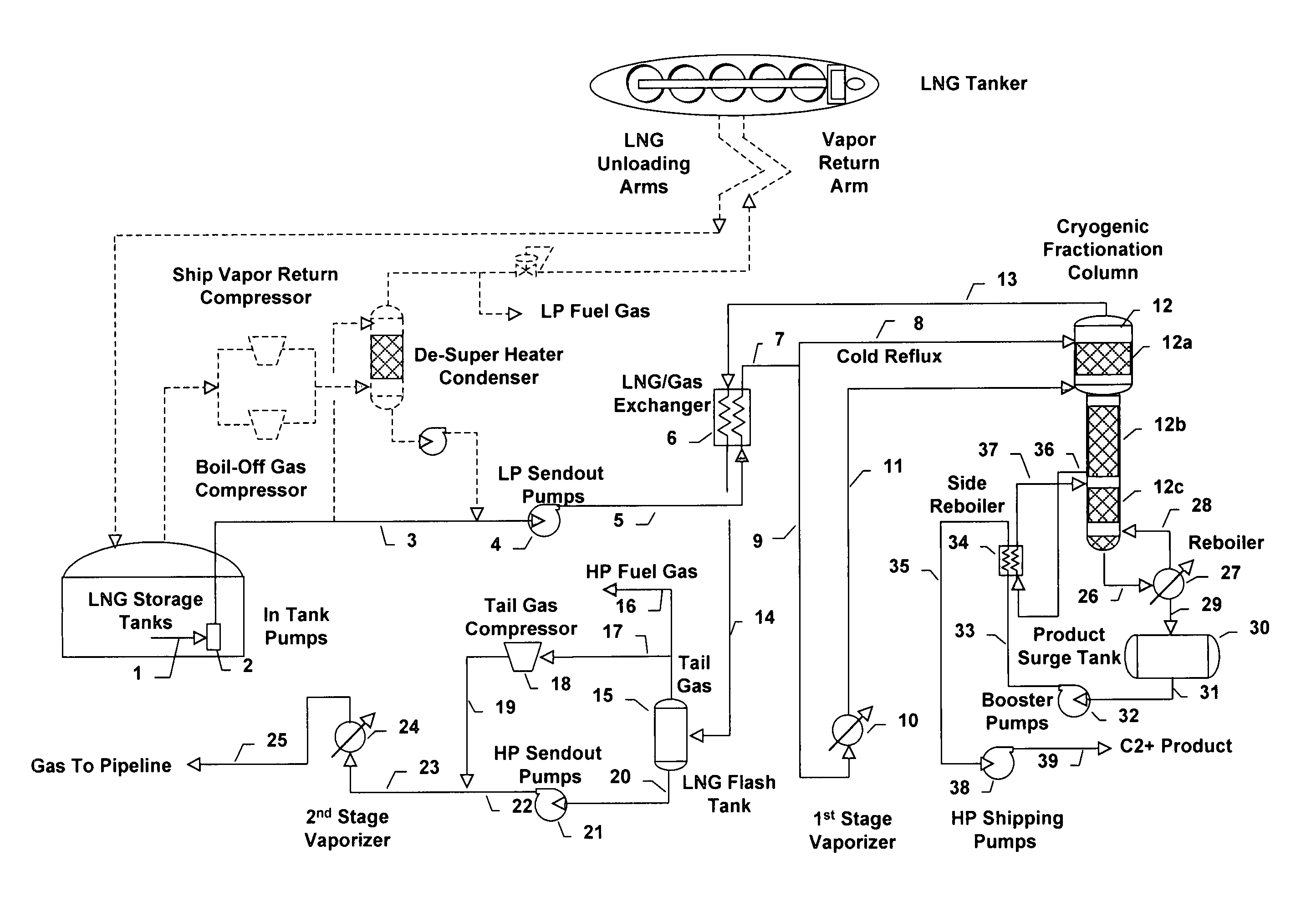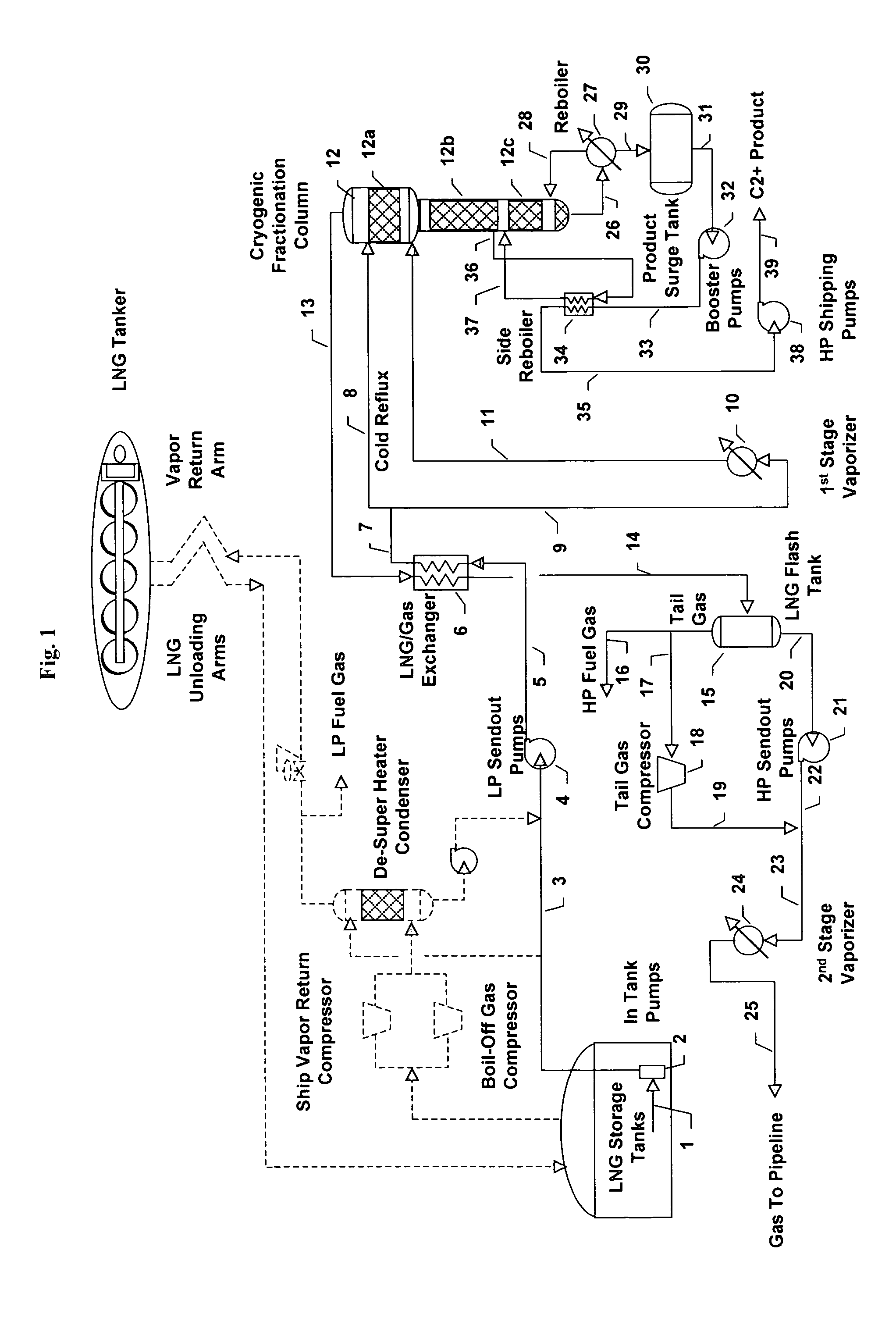Process for extracting ethane and heavier hydrocarbons from LNG
a technology of ethane and hydrocarbons, which is applied in the direction of container discharging methods, lighting and heating apparatus, and container filling under pressure, etc. it can solve the problems of not fully utilizing the process, adding to the capital cost and fuel consumption of the process, and reducing the extraction efficiency of ngl products
- Summary
- Abstract
- Description
- Claims
- Application Information
AI Technical Summary
Benefits of technology
Problems solved by technology
Method used
Image
Examples
example
[0054]One process embodiment as illustrated in FIG. 1 was modeled using a commercially available process simulation program called HYSYS (available from AspenTech of Calgary, Alberta Canada). HYSYS is commonly used by the oil and natural gas industry to evaluate and design process systems of this type. A wide range of LNG feed compositions were evaluated using the HYSYS model of our process. The HYSYS model calculation results for our process are summarized in Tables 1 and 2 below for one of the LNG feed compositions evaluated. The Example results given in Tables 1 and 2 are intended to illustrate performance of our process operating in the “High Ethane Recovery” mode for a typical LNG feed composition. Stream numbering in Tables 1 and 2 coincide with those illustrated in FIG. 1. Any person trained and skilled in the technical art of process engineering, particularly one having the benefit of these disclosed embodiments, will recognize the possibility for variations to the process c...
PUM
 Login to View More
Login to View More Abstract
Description
Claims
Application Information
 Login to View More
Login to View More - R&D
- Intellectual Property
- Life Sciences
- Materials
- Tech Scout
- Unparalleled Data Quality
- Higher Quality Content
- 60% Fewer Hallucinations
Browse by: Latest US Patents, China's latest patents, Technical Efficacy Thesaurus, Application Domain, Technology Topic, Popular Technical Reports.
© 2025 PatSnap. All rights reserved.Legal|Privacy policy|Modern Slavery Act Transparency Statement|Sitemap|About US| Contact US: help@patsnap.com


